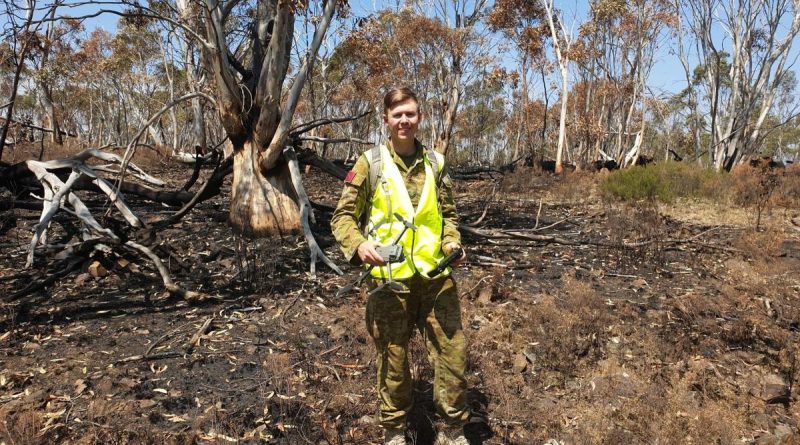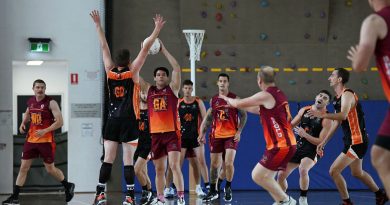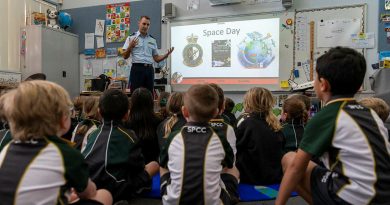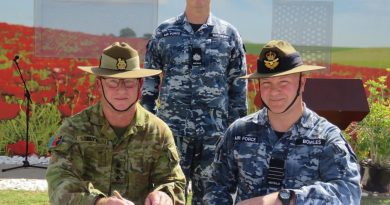Drone operator returns to bushfire town for Anzac Day
Share the post "Drone operator returns to bushfire town for Anzac Day"

A bombardier who flew daily drone missions to support fire relief efforts in eastern Victoria in 2019, returned on Anzac Day to attend the dawn service at one of the bushfire-ravaged towns.
CAPTION: Bombardier Christopher Dawson Army holds an unmanned aerial vehicle used on its first domestic mission during Operation Bushfire Assist. Story by Captain Catalina Martinez Pinto.
Bombardier Christopher Dawson, who flew the first Unmanned Aerial Vehicle (UAV) mission on domestic operations for 9th Regiment Royal Australian Artillery during Operation Bushfire Assist 2019, spent most of that operation in Orbost.
Before returning to the town for Anzac Day, he said: “I am looking forward to reconnecting with the communities who benefited from the ADF’s support in their time of need.
“I never imagined how learning to fly a UAV could make such a difference for a community in need,” Bombardier Dawson said.
Born in Newcastle and a fan of Star Wars movies, Bombardier Dawson joined the Army as a reservist in 2005, hoping to achieve something different and meaningful.
During the operation, he worked in a joint ADF and Victorian Police drone team. His initiative and ingenuity in emergency UAV operations was recognised with a soldiers’ medallion.
Bombardier Dawson said they were flying drones every day during the operation, doing missions for 15 different state agencies, including Victoria Police, Country Fire Authority and Roads Victoria.
“Our primary goal was the creation of the rules and standard operating procedures for the operation of drones in the congested emergency space,” he said. “I worked closely with local and state control centres.
“Most of the missions we worked on were around fire-damage assessments, including the use of thermal imagery and flying into areas where people could not access due to fire risks.”
On one occasion, because the fire had restricted access to areas, he had to fly his drone out from a Victoria Police maritime vessel in rough seas.
“We needed to access some coastal camp areas impossible to get to due to the condition of burned out roads,” he said.
“The only way to reach them was driving by boat to the vicinity, then for the drone to take off from the vessel to have enough range to reach the area.”
He was part of the operation for six weeks, working around the East Gippsland area, including Sail, Orbost, Bairnsdale, Mallacoota, Cann River and along Snowy River Highway.
.
.

.
.
Share the post "Drone operator returns to bushfire town for Anzac Day"





